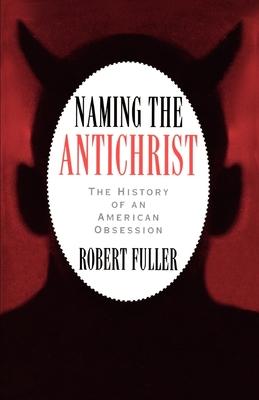
Book
Naming the Antichrist: The History of an American Obsession
(Write a Review)
Paperback
$28.49
Fuller begins by offering a brief history of the idea of the Antichrist and its origins in the apocalyptic thought in the Judeo-Christian tradition, and traces the eventual 71Gws how the colonists saw Antichrist personified in native Americans and French Catholics, in Anne Hutchinson, Roger Williams, and the witches of Salem, in the Church of England and the King. He looks at the Second Great Awakening in the early nineteenth century, showing how such prominent Americans as Yale president Timothy Dwight and the Reverend Jedidiah Morse (father of Samuel Morse) saw the work of the Antichrist in phenomena ranging from the French Revolution to Masonry. In the twentieth century, he finds a startling array of hate-mongers--from Gerald Winrod (who vilified Roosevelt as a pawn of the Antichrist) to the Ku Klux Klan--who drew on apocalyptic imagery in their attacks on Jews, Catholics, blacks, socialists, and others. Finally, Fuller considers contemporary fundamentalist writers such as Hal Lindsey (author of The Late Great Planet Earth, with some 19 million copies sold), Mary Stewart Relfe (whose candidates for the Antichrist have included such figures as Henry Kissinger, Pope John Paul II, and Anwar Sadat), and a host of others who have found Antichrist in the sinister guise of the European Economic Community, the National Council of Churches, feminism, New Age religions, and even supermarket barcodes and fibre optics (the latter functioning as "the eye of the Antichrist"). Throughout, Fuller reveals in vivid detail how our unique American obsession with the Antichrist reflects the struggle to understand ourselves--and our enemies--within the mythic context of the battle of absolute good versus absolute evil.
From the Scofield Reference Bible (no other book had greater impact on the American Antichrist tradition) to the Scopes Monkey Trial, Fuller provides an informative and often startling look at a thread that weaves persistently throughout American religious and cultural life.
Fuller begins by offering a brief history of the idea of the Antichrist and its origins in the apocalyptic thought in the Judeo-Christian tradition, and traces the eventual 71Gws how the colonists saw Antichrist personified in native Americans and French Catholics, in Anne Hutchinson, Roger Williams, and the witches of Salem, in the Church of England and the King. He looks at the Second Great Awakening in the early nineteenth century, showing how such prominent Americans as Yale president Timothy Dwight and the Reverend Jedidiah Morse (father of Samuel Morse) saw the work of the Antichrist in phenomena ranging from the French Revolution to Masonry. In the twentieth century, he finds a startling array of hate-mongers--from Gerald Winrod (who vilified Roosevelt as a pawn of the Antichrist) to the Ku Klux Klan--who drew on apocalyptic imagery in their attacks on Jews, Catholics, blacks, socialists, and others. Finally, Fuller considers contemporary fundamentalist writers such as Hal Lindsey (author of The Late Great Planet Earth, with some 19 million copies sold), Mary Stewart Relfe (whose candidates for the Antichrist have included such figures as Henry Kissinger, Pope John Paul II, and Anwar Sadat), and a host of others who have found Antichrist in the sinister guise of the European Economic Community, the National Council of Churches, feminism, New Age religions, and even supermarket barcodes and fibre optics (the latter functioning as "the eye of the Antichrist"). Throughout, Fuller reveals in vivid detail how our unique American obsession with the Antichrist reflects the struggle to understand ourselves--and our enemies--within the mythic context of the battle of absolute good versus absolute evil.
From the Scofield Reference Bible (no other book had greater impact on the American Antichrist tradition) to the Scopes Monkey Trial, Fuller provides an informative and often startling look at a thread that weaves persistently throughout American religious and cultural life.
Paperback
$28.49